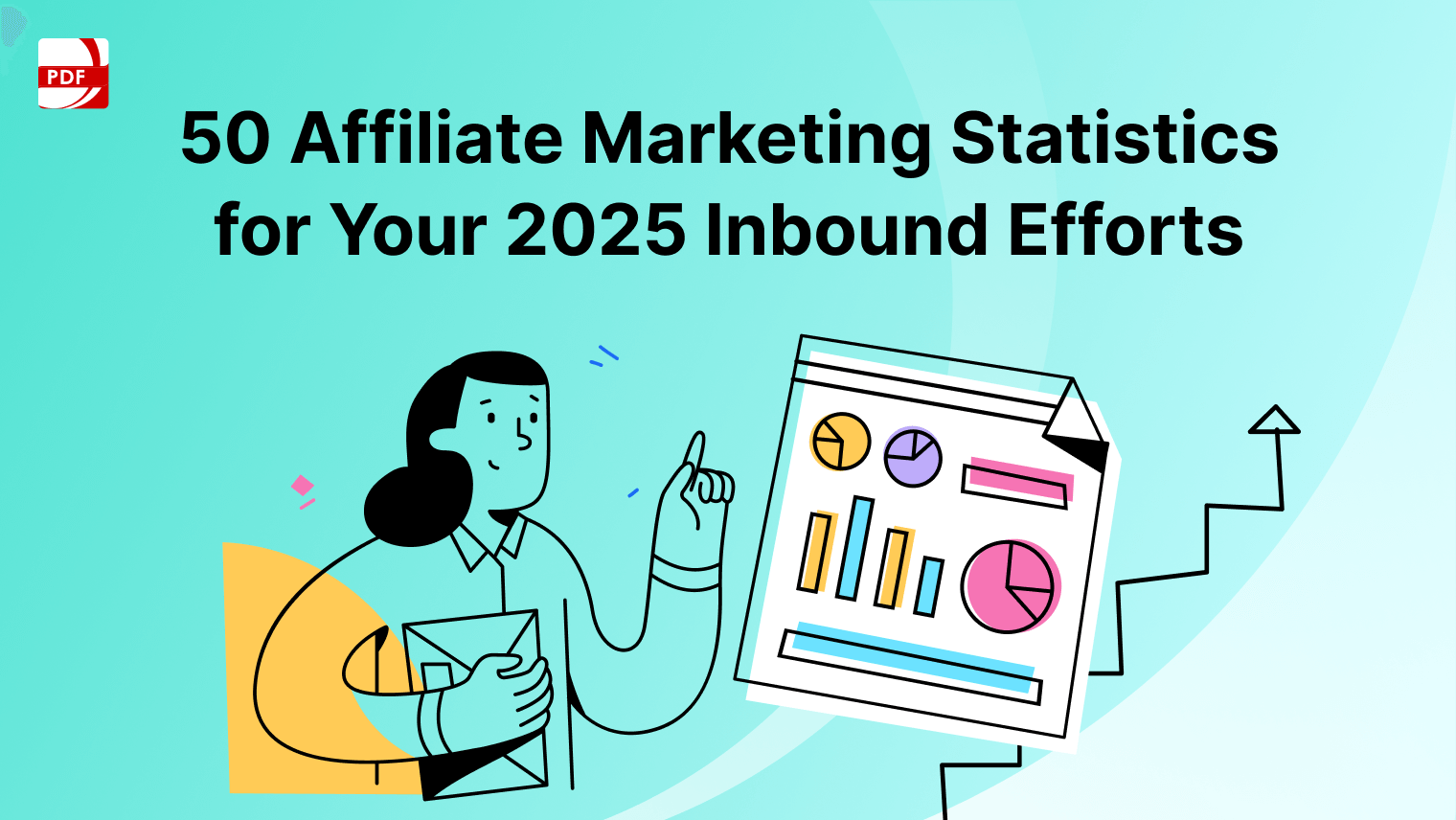Adding citations to a PDF bolsters its authenticity and provides readers with a clear trail back to the original source material. This ensures that the information is both verifiable and rooted in established knowledge.
Whether you're a student, a professional, or simply someone looking to share information, understanding how to integrate citations into a PDF seamlessly is crucial. Follow our helpful citation guide below.
How to Add Citations to a PDF on Windows
Easily add citations to your PDF files from different source types using PDF Reader Pro on your Windows operating system.
Step 1: Open Your PDF File
Launch PDF Reader Pro and open the document by clicking "Open File" or dragging and dropping the file into the home screen.
Image Source: PDF Reader Pro
Step 2: Add a Text Box or Annotation
- Locate the portion of the PDF where you want to add the relevant reference.
- Use our built-in citation tool. Click on the "Text Box" or "Add Text" tool in the PDF editor's toolbar. This tool allows you to insert citation details into the PDF.
- Place the text box in the desired location and type or paste the additional citation information from the larger publication.

Image Source: PDF Reader Pro
Step 3: Format the Citation
Use the text formatting options in your PDF editor to format the citation (e.g. formal paper, online newspapers, print journals) according to your citation style (e.g., APA, MLA, Chicago Manual of Style). You can adjust the font, size, and style to match the document's formatting.
Image Source: PDF Reader Pro
Step 4: Insert References
If you need to create a list of external references for every type of document at the end of your PDF, add a new page or section for your references. List the full bibliographic details of your sources in the appropriate citation style.
Image Source: PDF Reader Pro
Step 5: Save Your Changes
Ensure you save your PDF document after adding citations.
Image Source: PDF Reader Pro
How to Add Citations to a PDF on Mac
Quickly add flawless citations in digital format to your PDF using PDF Reader Pro on your Mac operating system.
Step 1: Open Your PDF File
To begin, initiate PDF Reader Pro and open your document either by selecting "Open File" or by a simple drag-and-drop action on the main screen.
Image Source: PDF Reader Pro
Step 2: Include a Text Box or Annotation
Identify the precise location within the PDF where you intend to insert a citation. Now, within the PDF editor's toolbar, use the reference tool. Select the "Text Box" or "Add Text" tool. This feature enables you to embed text within the PDF. Position the text box precisely where desired and input the PDF citation information.
Image Source: PDF Reader Pro
Step 3: Format the Citation
Change the citation format capabilities in your PDF editor to tailor the citation's appearance in accordance with your preferred citation style guide, such as APA (American Psychological Association), MLA (Modern Language Association), or Chicago style. You can customize font, size, and style regular sources to harmonize with the overall document format.
Image Source: PDF Reader Pro
Step 4: Incorporate References
If creating a comprehensive list of professional documents at the conclusion of your PDF is required, introduce a new page or a dedicated section for your references. Within this section, meticulously list the complete bibliography fields of your sources, adhering to the specific citation style's guidelines.
Image Source: PDF Reader Pro
Step 5: Preserve Your Amendments
Once you've seamlessly integrated the citations into your PDF, be sure to save your document. This ensures that your changes are securely retained, and your PDF is up to date.
Image Source: PDF Reader Pro
Reasons to Add Citations to a PDF
Using style guidelines to add source material citations to a PDF are essential, just like with any academic or official work. Here are some reasons why:

-
Academic Integrity: Citing sources, including PDF files, is fundamental to academic work. Proper citations prevent plagiarism and demonstrate that you've done your research.
-
Credit to Original Authors: Proper citation gives credit to those who conducted the research or created the content. Recognizing original authors promotes respect for their work and encourages more high-quality research.
-
Verification: Citations allow readers to verify the accuracy of your claims. By citing the original PDF, readers can check the source to ensure the information from the source material has been presented correctly.
-
Trackability: If a reader wants to delve deeper into a topic, your citation provides a pathway. This aids in the scholarly exchange of ideas and facilitates more in-depth research.
-
Context: Sometimes, the context in which information is presented can influence its meaning. Citing the original PDF using bibliography tools can provide readers with context, allowing them to understand the broader implications of the data.
-
Avoid Misinformation: Properly citing ensures that you refer back to the original source, reducing the risk of misinterpreting or misrepresenting the information.
-
Professionalism: Whether writing a paper, compiling a report, or crafting an article, citing your sources (including PDFs) showcases your professionalism and diligence.
-
Legal Implications: Some materials are copyrighted; failing to give appropriate credit can have legal implications.
-
Format Clarity: PDFs can sometimes contain unique formatting, visual elements, or interactive components not present in other formats. Citing the PDF alerts the reader to these potential differences.
-
Date and Version Accuracy: Multiple versions of documents can exist, and they may be updated or revised over time. By citing the specific PDF you referenced, you clarify the version and date of the material you're discussing.
You can also explore our tips on how to create a professional reference list.
Best Practices for Adding Citations to PDFs
No matter the type of document, be it an online book or a scholarly article, you can use our best practices to create flawless citations for your PDF.
1. Treat the PDF as the Type of Source It Represents: A PDF file is often just a digital version of another source type, like a book, journal article, or report. When citing, consider what the PDF represents and follow the citation style for that source type.
2. Include the URL if Accessed Online: If you access the PDF from a website or database, include the online article URL or DOI (Digital Object Identifier) in your citation. This allows readers to access the original source.
3. Don’t Forget the File Format: While some individual citation styles might not require it, it can be helpful to indicate that the source is in PDF format, primarily if the format affects the content or presentation of the resource types.
4. Note Page Numbers: Just like with any other source, if you quote or paraphrase specific sections, it's crucial to provide page numbers, if available, for more accurate referencing.
5. Double-Check Authorship and Publication Dates: Sometimes, digital files might be reprints or later versions of previous documents. Always ensure you have the correct authorship and publication date for your citation in the case of PDF articles.
6. Use Stable and Archival URLs: Use stable URLs or archival URLs (like those from the Wayback Machine) to ensure your readers can access the source even if the original website changes or goes down.
Adding Citations to a PDF: FAQs
Navigating the intricacies of adding citations with or without a citation management app to a PDF can seem daunting. Here, we've compiled a list of frequently asked questions to guide you through the process and ensure your document is both credible and user-friendly.
1. Why is it important to add citations to a PDF?
Citations lend authenticity to your work, allowing readers to trace the origin of your source material. They help prevent plagiarism and build trust with your audience.
2. How can I embed article citations directly into a PDF?
Multiple software options, such as Adobe Acrobat and PDF Reader Pro allow you to annotate and add text, including in-text citations, directly to your PDF.
3. Can I hyperlink citations in a PDF to the original source?
Yes, many PDF editors allow you to create hyperlinks. This is especially useful if you’re citing online sources with the title of reference. Readers can click on the link to be taken directly to the original content.
4. How should I format my simple citation forms in a PDF?
The format largely depends on the citation style you're following (e.g., established styles like APA, MLA, Chicago). Ensure you're consistent throughout the document and adhere to the guidelines of the chosen style and source material.
5. What if my source is another PDF?
Cite the PDF as you would any other source, considering its type (e.g., an entire book, journal piece, magazine article, periodical title). If accessed online, include the URL or DOI (Digital Object Identifier) in the formatting of common citation styles.
6. How do I handle footnote referencing styles and endnotes in a PDF?
Most advanced PDF editors have tools that allow you to insert footnotes and endnotes. Check the software's documentation or help section for guidance on footnote styles or use a citation management tool.
7. Can I insert bibliography entries or reference list entries into my PDF?
Absolutely. Typically, an extensive citations list would be added to the end of your document. It’s a compilation of all the regular sources you've cited and provides a comprehensive list for readers interested in further exploration.
8. What if the citation disrupts the flow of my PDF document?
You can start editing citations after insertion. Use a smaller font size, a different color, or put the citation in brackets to make it less obtrusive. Alternatively, rely on footnotes or endnotes to keep the main body of text flowing smoothly. Go back for answers about achieving efficiency with footnotes.
9. How do I ensure the accessibility of my citations for visually impaired readers?
Use PDF editors that support accessibility features. Ensure that annotations, including citations, are readable by screen readers. Proper tagging and alternate text from a citation service can be beneficial.
10. Can I automate the citation process with a citations tool in a PDF?
While PDF editors may not have citation managers built-in, you can use reference management and citation generator software like Zotero or EndNote to manage your citation source, be it academic papers, newspaper articles, and online databases. Once done, you can integrate them into your PDF.
Citing a PDF means recognizing what the PDF represents and ensuring that your readers can access and verify the information in the current document. Always remember to adhere to the guidelines of your chosen bibliography style and provide more detail rather than less when in doubt.









 Free Download
Free Download  Free Download
Free Download 





 Support Chat
Support Chat